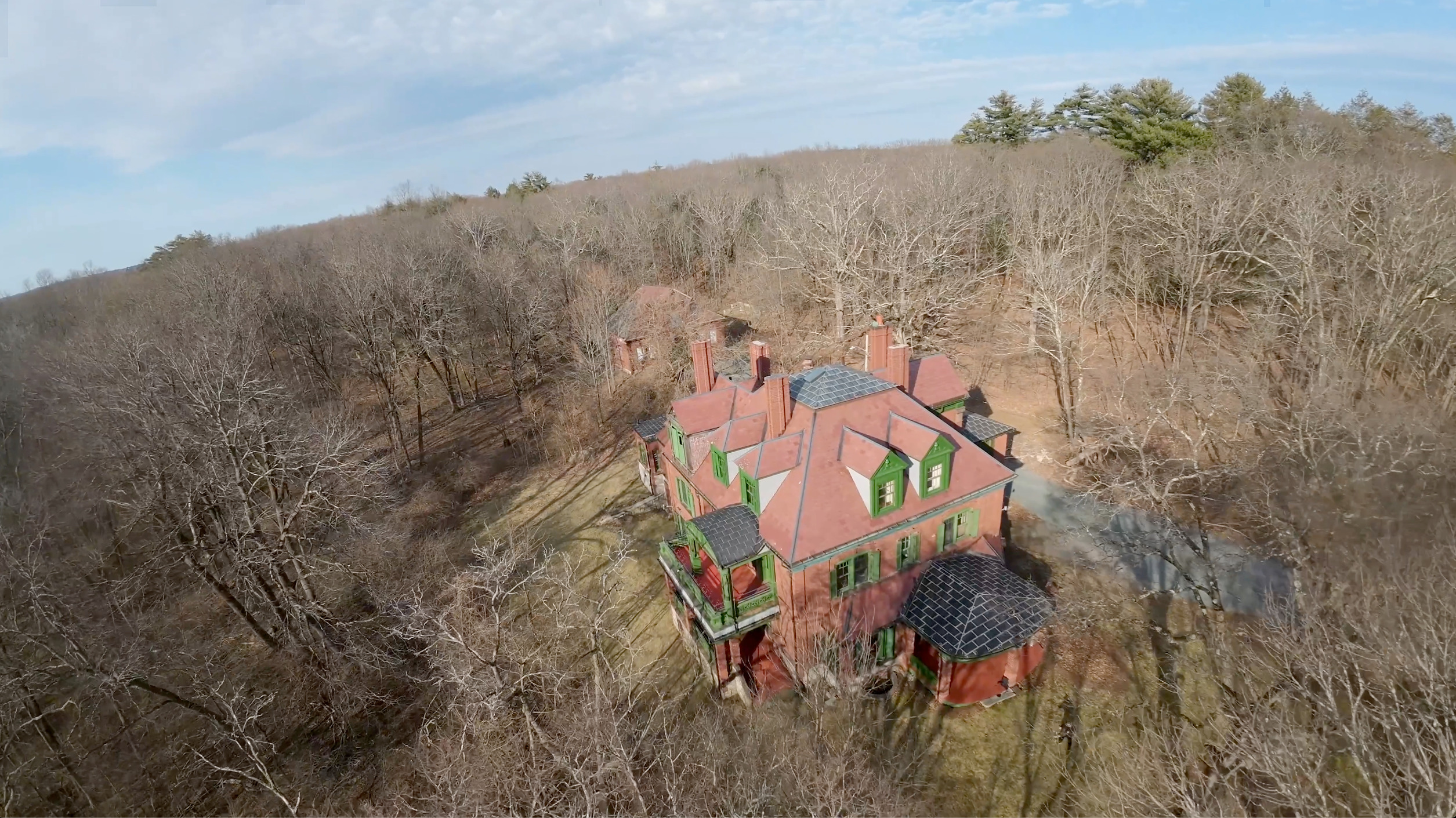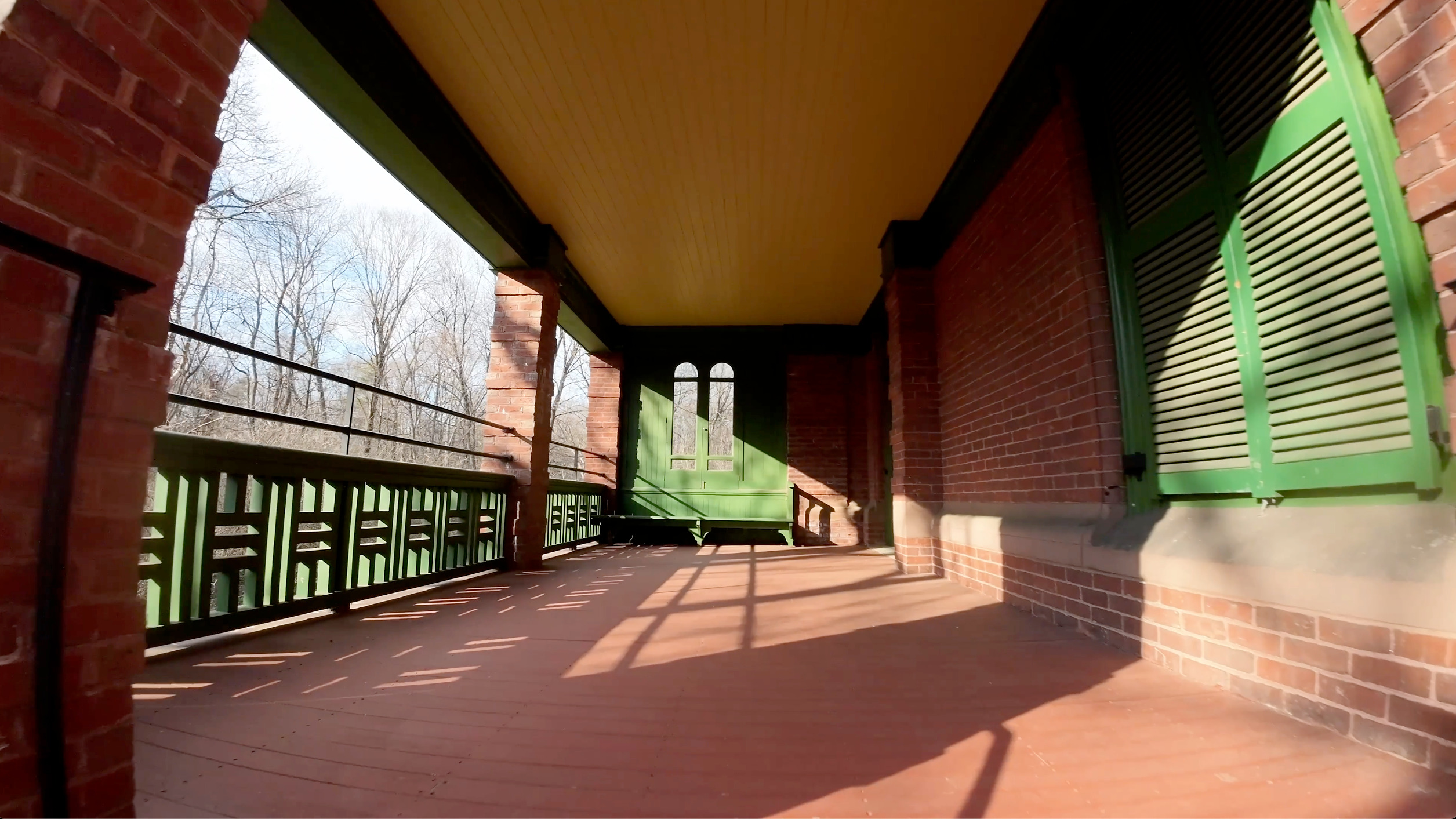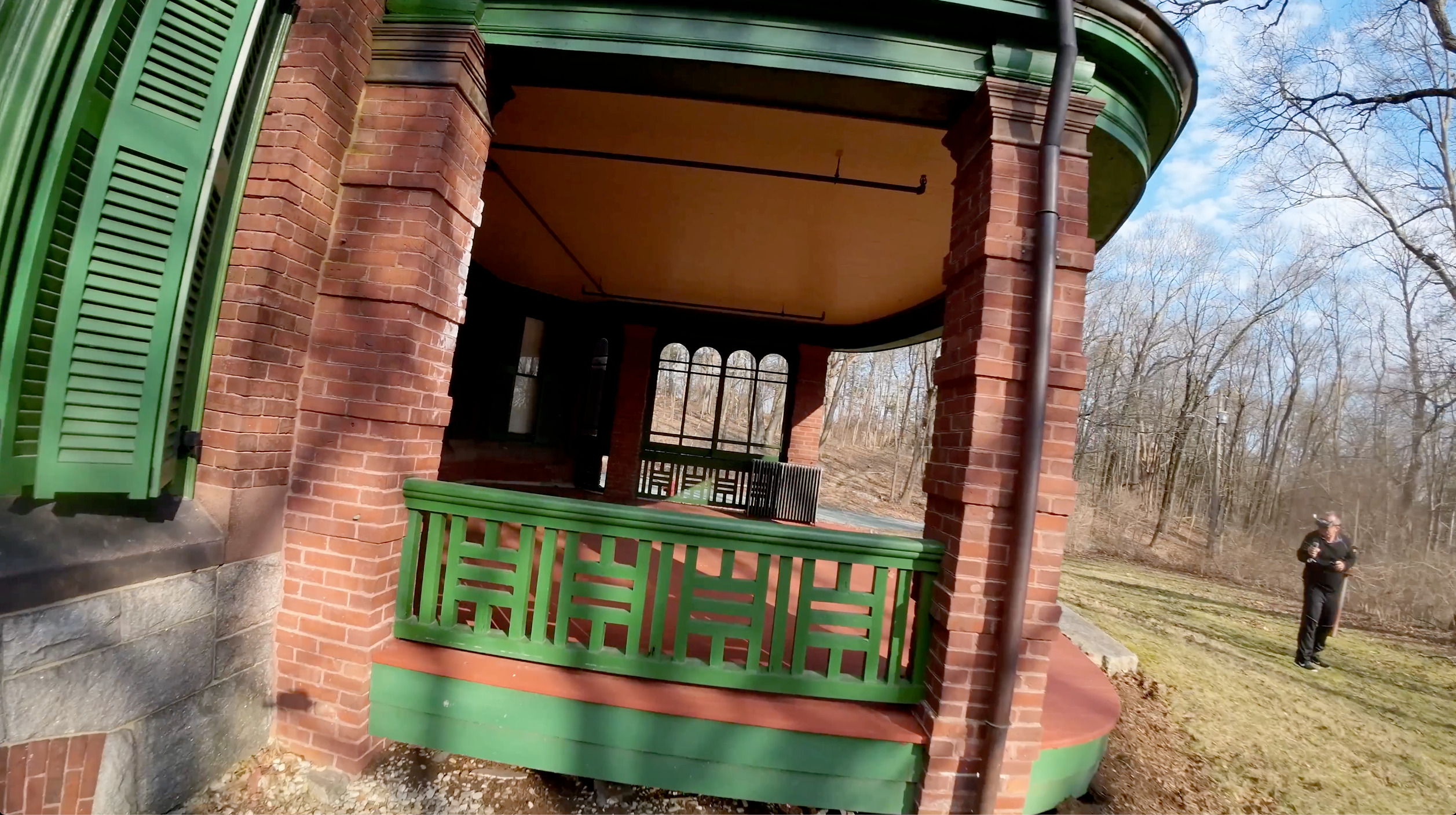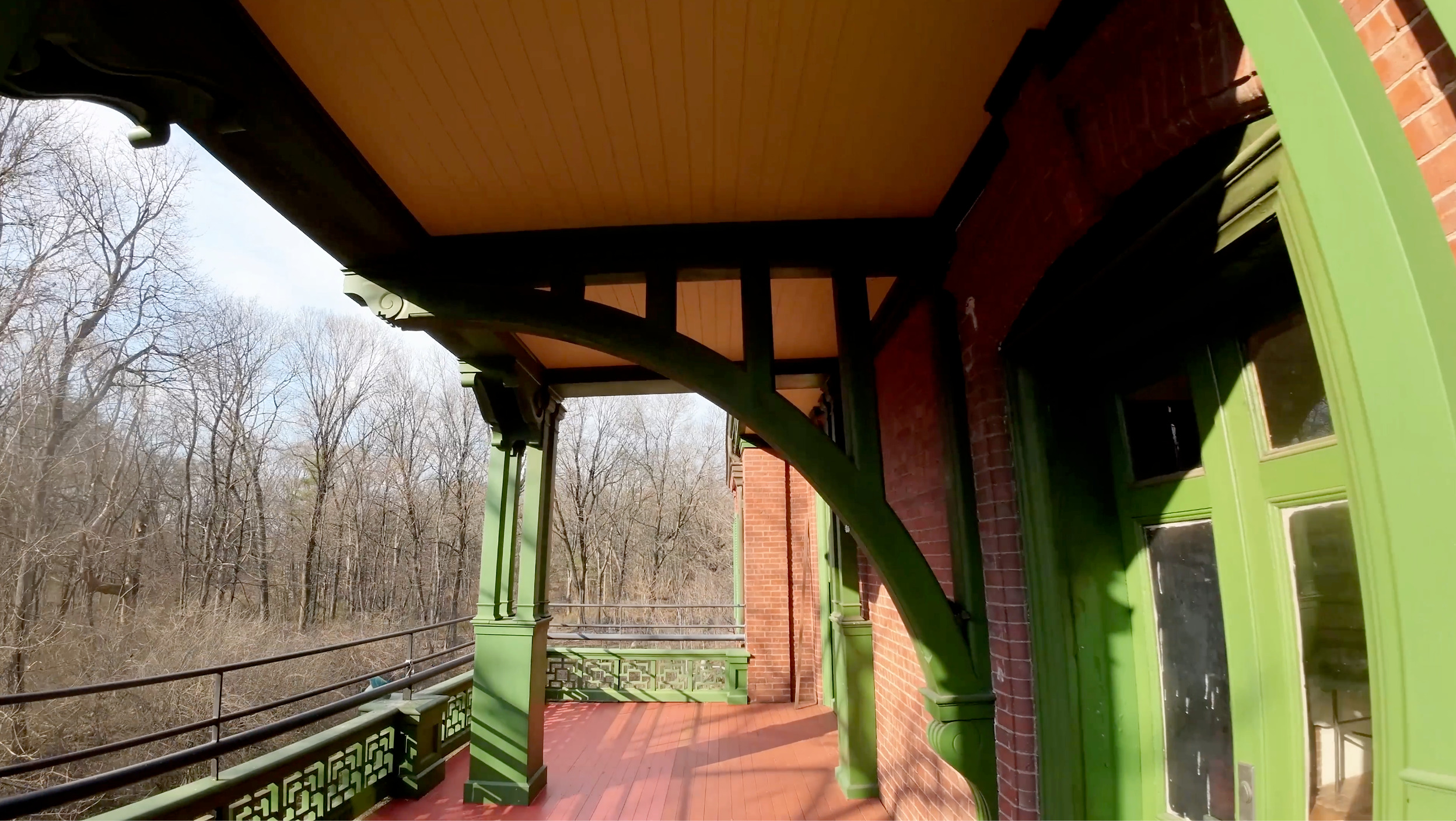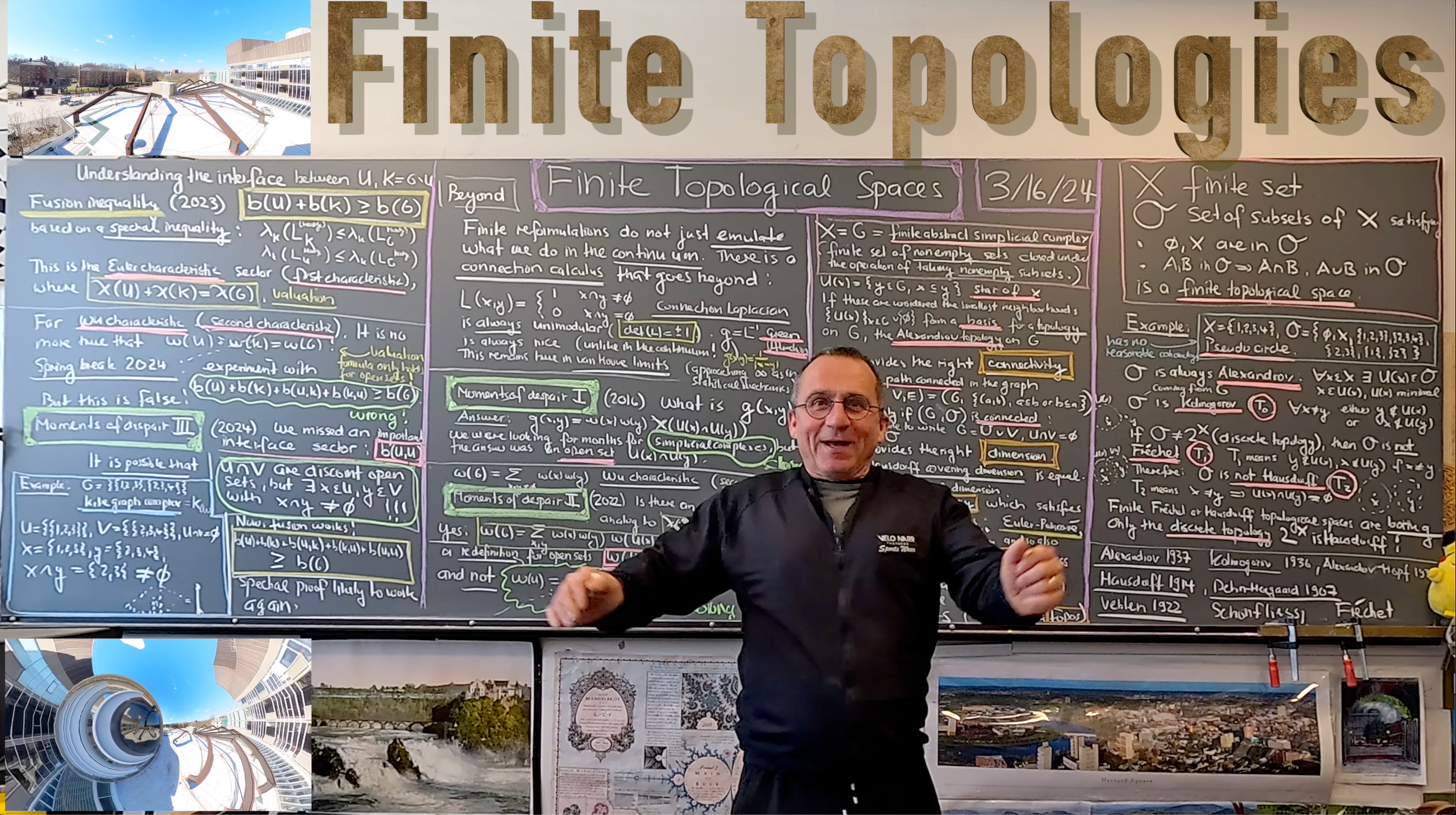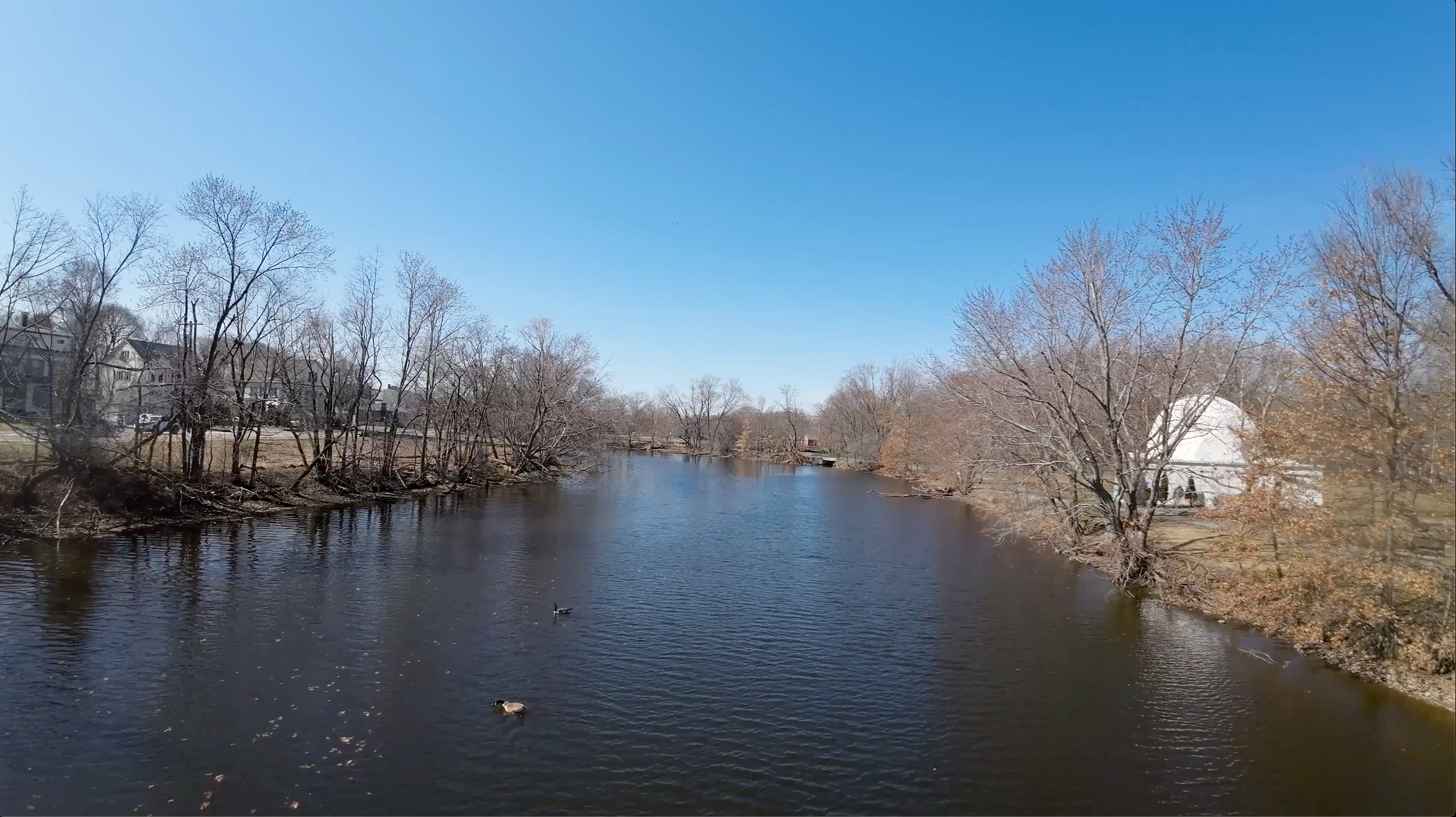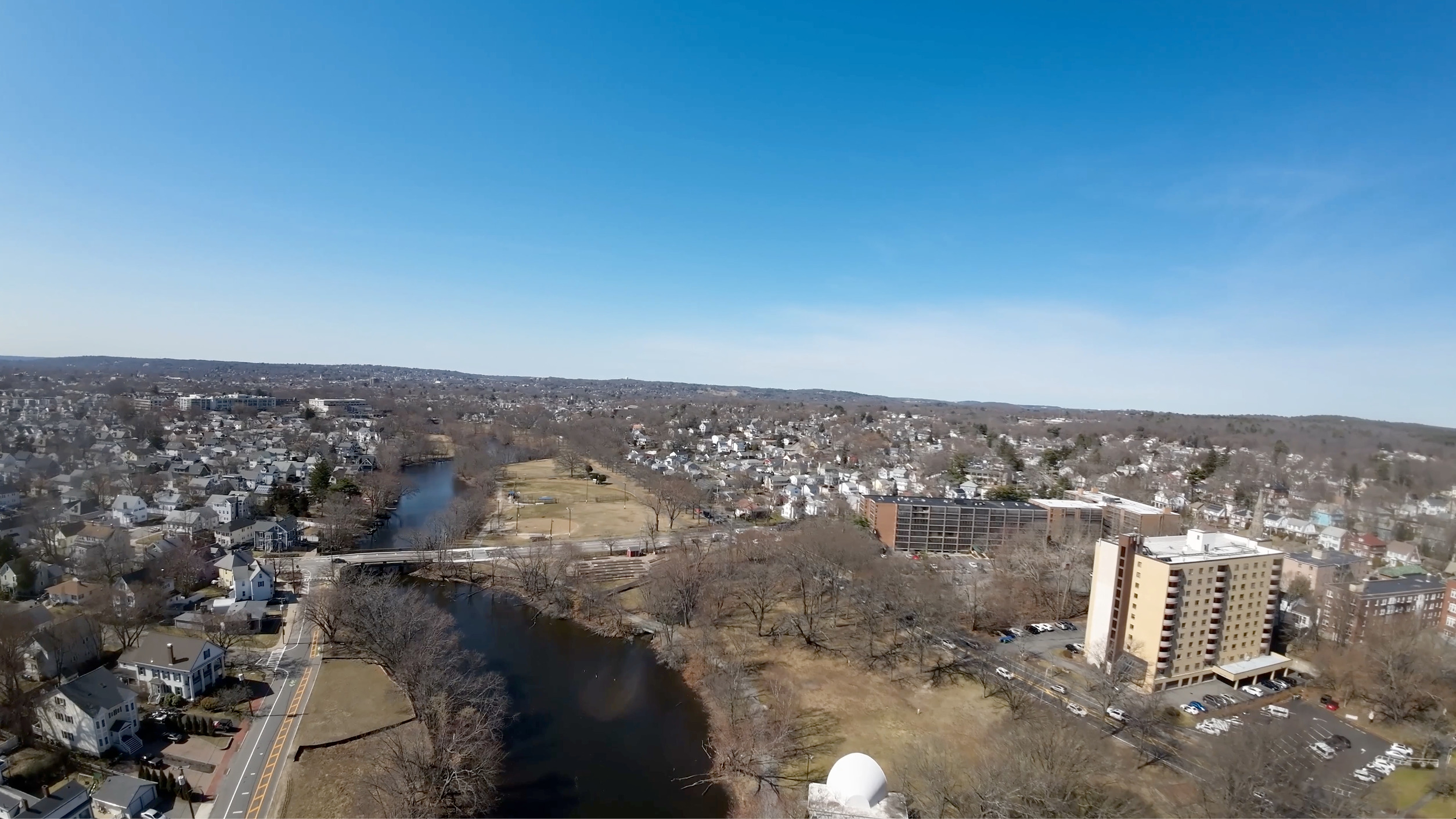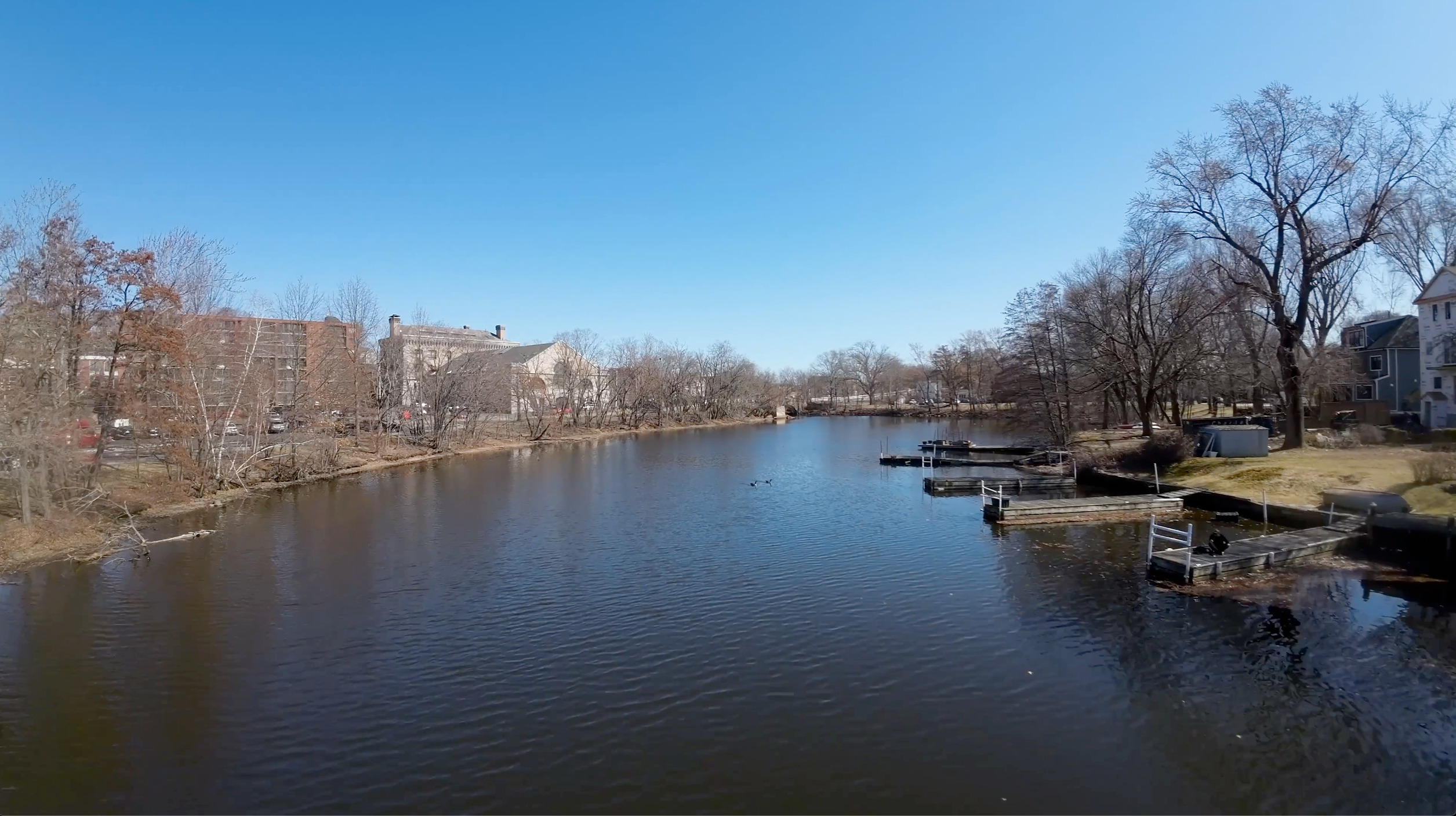Finite topological spaces are only interesting if non-Hausdorff. The reason is that every Hausdorff finite topological space is just the boring discrete topology. The topology from a simplicial complex is an example of a nice and interesting topology because it produces the right connectivity and dimension on the complex without the need of geometric realization. The later is a categorical betrayal of combinatorics: when working in a combinatorial (or quantum calculus level), the point is exactly to avoid the continuum. And as pointed out quite a few times already, the topology of a simplicial complex coming from the geometric realization is often misleading: the double suspension of a homology sphere should never be a sphere. But the suspension theorem assures that with geometric realizations, the double suspension of a homology 3-sphere is a 5-sphere. If our world should be discrete (there is no experimental physics evidence for that just more and more mathematical evidence that we just do not need the continuum),. When we stay in the finite, then the topological acrobatics which produces a homeomorphism between the double suspension of a homology sphere and a 5-sphere is not possible.
So, if we want to get serious with getting rid of the continuum, we have to befriend ourselves with finite topological spaces and the fact that the Hausdorff property is no more an option. [By the way, one can always ask when doing mathematics, what structures should be used. There is a bewildering choice of possibilities and mathematicians invent new ones every moment, and none should be excluded. For me personally, mathematical structures need to be simple, really simple. Metric spaces are great and pass the test of simplicity but topological spaces are even simpler. One can see this in definitions. 120 years ago, one could have had the impression that in order to define continuity or notions of limits (modern notions are now 200 years old) . one would need infinity. Set theoretical topology defined continuity in a way which can not be simpler: the inverse of any open set has to be open. [By the way, in graphs, groups and geometry I had argued that metric spaces are more natural than topological spaces. In the context of pairing it with an algebraic structure (group), this was the case. As far as I know, there are no topological spaces which naturally define a unique group structure on it so that all homeomorphisms are group translations. The group of homeomorphisms (at least classically like for a circl) is infinite dimensional in general while the group of isometries has the chance of being finite dimensional. But the last word has not been spoken yet as the notion of homeomorphism in finite topological frame works is more subtle. I wrote about this problem here: the naive notion, a bijection for which the inverse of open sets are open and the image of open sets are open does not work as with that verbatim definition of homeomorphism, only the identity works. It is clear that any reasonable notion of homeomorphism in the finite must involve some sort of Barycentric refinement and especially that Barycentric refined topological spaces should be considered homeomorphic. ]
I myself still grapple with some of the non-intuitive features of finite topologies. Especially in finite topological spaces coming from a positive dimensional complex: there are two disjoint open sets U,V with a point x in U and y in V, such that . This was actually the impediment for me to see the fusion inequality
for Wu cohomology. One of the non-intuitive notions is that while many open sets are smallest neighborhoods of closed sets (take a closed set A. There is then a smallest open set containing A), there are many open sets that are not neighborhoods of closed sets. They do not contain any closed set. This is already the case for stars of positive dimensional simplices. These sets do not contain any closed subset as otherwise, they would contain a zero dimensional point but stars of positive dimensional simplices do not contain any. Here is an example: the complete complex G={{1}, {2}, {1, 2}}{{1}, {2}, {1, 2}} has the finite topology O = {{{1, 2}}, {{1}, {1, 2}}, {{2}, {1, 2}}, {{1}, {2}, {1, 2}}, {}} which contains besides the mandatory X and 0, the stars U(1),U(2) and U(1,2). There are 5 open sets and already one of them U(1,2), the star of the 1-dimensional simplex, does not contain a closed set. The closed sets by the way are just the complements of O which is {X,0,{1},{2},{1,2}} as there are 5 sub simplicial complexes (= closed sets) in G.
The intuition behind the fusion inequality is separating a system into an open set U (outside world) and closed set K (laboratory) only can decrease the energy (eigenvalues). Zero eigenvalues of G stay zero eigenvalues of the split system . The separated system can therefore have only more harmonic forms (equilibria=eigenvectors to the smallest eigenvalue 0) and not less. In the simplicial cohomology case, the prototype is a 2-ball G=B with b(B)=(1,0,0) where the open interior U has b(U)=(0,0,1) and the boundary K=G-U has b(K)=(1,1,0). Now b(U)+b(K)=(1,1,1) is larger than b(G)=(1,0,0). The separated system can have more harmonic forms (particles), because separating the system has lowered the energies (eigenvalues) in general because we have decreased the pool of eigenfunctions (there are mini-max principles for the eigenvalues). The separated system has a 1- form and 2-form more (the boundary circle had a 1-form, the open set had a 2-form as it is a cocycle without boundary (as the boundary was removed). Removing the barrier between U and K allowed to merge the two harmonic forms. The “particles” annihilate each other: there is no 1 form nor any 2 form on the disk G. There is no reason why we should not have the same intuition work the Wu case (higher characteristic). And indeed, this seems to be the case. As far as I can see, the spectral inequality holds in the same way allowing also to show in the higher characteristic case that an fusion inequality holds.
I had for a long time missed the b(U,U) part in the inequality so that the experiments often indicated that there is no inequality. I mentioned this in the fusion inequality paper. In the movie, I mentioned three pitfalls, where I had been stuck in the past (sometimes for months). They all are related to finite topologies and the bit strange world of non-Hausdorff spaces:
- The inverse matrix g (Green function) of the connection Laplacian L(x,y) = 1 if
and
if
has entries
. The sets U(x) and U(y) are open sets. I had looked in 2016 for a long time for closed sets. I called the identity the Green-Star identity because it is a relation for the Green function involving intersection of stars.
- When looking at Green function formulas for higher characteristic like Wu characteristic, it is important to define
and not
. It is a small change but essential! With the later definition, things do not work. It is related to the next point, the intersection of two points in U can leak out to K. This is not possible the other way round. The intersection of two points in K stays in K because K is closed.
- Related to 2. is the question how to define
. The reason is that w(A,A) does not agree with w(A) as defined before. This was an other problem to find the right fusion inequality for higher characteristic. What happend was that while we have corrected in 2), namely removing the part of the U,U connection which leaks out, must not be forgotten. It must be included into the mix.
Over spring break, I experimented with the failing fusion inequality for Wu cohomology. It turns out that one important ingredient was missing: w(U,U) which is the case of pairs (x,y) where x in U and y in U such that is not in U. Below is the still rough code showing the Wu cohomology fusion inequality to work. It still is a bit ugly: we implement it as w(K,U) taking over also w(U,K) so that it has to be counted twice. This is due to the way, we define w(K,U). What happens is that we have pairs in K,U with intersection in K or pairs U,U with intersection in K and this has to be distinguished between pairs in U,U intersecting in U. It is clear that we can not just define a universal w(U,U) as there are two cases. In the code, I added a flag “Open” or “Closed” to do things. I hope this can be done more elegantly.
[P.S. in the video, I do not explain well my main difficulty I have had during spring break . My explanation points at the heart but it was actually slightly different: what was my problem is that there are open sets U and points x,y in U such that the intersection of x and y is outside U in the complement K. The example given with the kite graph works too to explain this. Let U={{1,2,3},{2,3,4}} which is an open set in the Whitney complex of the kite graph K(2,1,1). Now x={1,2,3} and y={2,3,4} are both in U but their intersection is in K, which is the 1-dimensional skeleton complex of the kite graph K={{1,2},{2,4},{4,3},{3,1},{2,3},{1},{2},{3},{4}} which is a simplicial complex (closed sets in the topology are given by sub simplicial complexes). ]
At the moment, I’m not yet happy with my code: it works ,but is not yet natural enough. I think to change it as follows: what we need is a notion and
, where the first takes into account all pairs (x,y) for which the intersection is in A and the later all pairs so that the intersection is outside A. Then
and
is this missing piece. Then
and include
and instead of taking
, we can take
. The fusion inequality is then more natural:
.
Generate[A_]:=If[A=={},{},Sort[Delete[Union[Sort[Flatten[Map[Subsets,A],1]]],1]]];
CleanComplex[G_]:=Union[Sort[Map[Sort,G]]]; L=Length; Ver[X_]:=Union[Flatten[X]];
Whitney[s_]:=Generate[FindClique[s,Infinity,All]]; L2[x_]:=L[x[[1]]]+L[x[[2]]];
sig[x_]:=Signature[x]; nu[A_]:=If[A=={},0,L[NullSpace[A]]]; Rnd:=Random[]-1/2;
nu[A_]:=If[A=={},0,L[A]-MatrixRank[A]];
F[G_]:=Module[{l=Map[L,G]},If[G=={},{},Table[Sum[If[l[[j]]==k,1,0],{j,L[l]}],{k,Max[l]}]]];
sig[x_,y_]:=If[SubsetQ[x,y]&&(L[x]==L[y]+1),sig[Prepend[y,Complement[x,y][[1]]]]*sig[x],0];
Dirac[G_]:=Module[{f=F[G],b,d,n=L[G]},b=Prepend[Table[Sum[f[[l]],{l,k}],{k,L[f]}],0];
d=Table[sig[G[[i]],G[[j]]],{i,n},{j,n}]; {d+Transpose[d],b}];
Hodge[G_]:=Module[{Q,b,H},{Q,b}=Dirac[G];H=Q.Q;Table[Table[H[[b[[k]]+i,b[[k]]+j]],
{i,b[[k+1]]-b[[k]]},{j,b[[k+1]]-b[[k]]}],{k,L[b]-1}]];
Betti[s_]:=Module[{G},If[GraphQ[s],G=Whitney[s],G=s];Map[nu,Hodge[G]]];
F2[G_]:=Module[{},If[G=={},{},Table[Sum[If[L2[G[[j]]]==k,1,0],{j,L[G]}],{k,Max[Map[L2,G]]}]]];
WuComplex[A_,B_,opts___]:=Module[{K={},x,y,u},
Do[x=A[[k]];y=B[[l]];u=Intersection[x,y];
If[((opts=="Open" && Not[x==y] && L[u]>0 && Not[MemberQ[A,u]]) ||
(Not[opts=="Open"] && MemberQ[A,u])),
K=Append[K,{x,y}]],{k,L[A]},{l,L[B]}];Sort[K,L2[#1]<L2[#2] &]];
Dirac[G_,H_,opts___]:=Module[{n=L[G],K,m=L[H],b,d1,d2,h,v,w,l,DD}, K=WuComplex[G,H,opts];
n2=L[K]; f2=F2[K]; b=Prepend[Table[Sum[f2[[l]],{l,k}],{k,L[f2]}],0];
D1[{x_,y_}]:=Table[{Sort[Delete[x,k]],y},{k,L[x]}];
D2[{x_,y_}]:=Table[{x,Sort[Delete[y,k]]},{k,L[y]}];
d1=Table[0,{n2},{n2}]; Do[v=D1[K[[m]]]; If[L[v]>0,Do[r=Position[K,v[[k]]];
If[r!={},d1[[m,r[[1,1]]]]=(-1)^k],{k,L[v]}]],{m,n2}];
d2=Table[0,{n2},{n2}]; Do[v=D2[K[[m]]]; If[L[v]>0, Do[r=Position[K,v[[k]]];
If[r!={},d2[[m,r[[1,1]]]]=(-1)^(L[K[[m,1]]]+k)],{k,L[v]}]],{m,n2}];
d=d1+d2; DD=d+Transpose[d]; {DD,b}];
Hodge[G_,H_,opts___]:=Module[{Q,P,b},{Q,b}=Dirac[G,H,opts];P=Q.Q;
Table[Table[P[[b[[k]]+i,b[[k]]+j]], {i,b[[k+1]]-b[[k]]},{j,b[[k+1]]-b[[k]]}],{k,L[b]-1}]];
Betti[G_,H_,opts___]:=Map[nu,Hodge[G,H,opts]];
Wu[A_,B_,opts___]:=Sum[x=A[[k]];y=B[[l]];u=Intersection[x,y];
If[(opts=="Open" && Not[x==y] && L[u]>0 && Not[MemberQ[A,u]]) ||
(Not[opts=="Open"] && MemberQ[A,u]),
(-1)^L2[{x,y}],0],{k,L[A]},{l,L[B]}];
OpenStar[G_,x_]:=Module[{V={}},Do[If[SubsetQ[G[[k]],x],V=Append[V,G[[k]]]],{k,Length[G]}];V];
Basis[G_]:=Table[OpenStar[G,G[[k]]],{k,Length[G]}]; Stars=Basis;
RandomOpenSet[G_,k_]:=Module[{A=RandomChoice[Basis[G],k],V={}},Do[V=Union[V,A[[j]]],{j,k}];V];
s = RandomGraph[{20,40}];
G = Whitney[s]; U = RandomOpenSet[G,3]; K = Complement[G, U];
{bU,bK,bKU,bUK,bUU,bG}=PadRight[
{Betti[U,U,"Closed"],Betti[K,K,"Closed"],
Betti[K,U,"Closed"],Betti[U,K,"Closed"],
Betti[U,U,"Open"],Betti[G,G,"Closed"]}];
Print[ ColumnForm[{
{"U",bU, Wu[U,U,"Closed"]},
{"K",bK, Wu[K,K,"Closed"]},
{"UK",bUK, Wu[U,K,"Closed"]},
{"KU",bKU, Wu[K,U,"Closed"]},
{"UU",bUU, Wu[U,U,"Open"]},
{"G",bG, Wu[G,G,"Closed"]},
{"Total",bU+bK+2bKU+2bUK+bUU-bG,
Wu[U,U,"Closed"]+Wu[K,K,"Closed"]+2Wu[U,K,"Closed"]+2Wu[K,U,"Closed"]+Wu[U,U,"Open"]-Wu[G,G,"Closed"]}}]];
